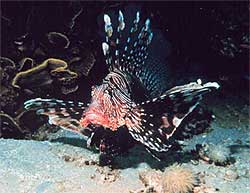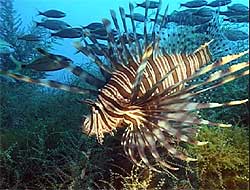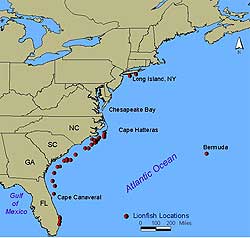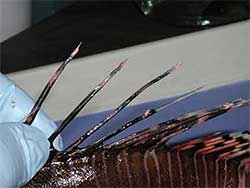 | Lionfish Invade Eastern US Coast Look, But Don't Touch! |
It floats like a butterfly, but stings like a bee -- a BIG bee! And it's invading the coastal waters of the eastern United States. What is it? It's the lionfish (Pterois volitans) and it is packing a punch to the nervous system of anyone unlucky enough to touch it.
On May 21, 2004, NOAA issued a warning to divers and fishermen: use extreme caution around lionfish! The lionfish has spines that can deliver a painful sting. A venom gland is located at the base of each spine. The venom is a combination of protein, a neuromuscular toxin and the neurotransmitter called acetylcholine. After a spine punctures the skin, the venom travels up a groove in the lionfish's spine into the wound.
The most common treatment for a lionfish sting is to:
Many ocean animals have venoms or poisons that target the nervous system: the blue ringed octopus, cone snail and pufferfish. Add the lionfish to this list.
|
| References:
|
| GO TO: | Neuroscience In The News | Explore the Nervous System | Table of Contents |
![[email]](./gif/menue.gif) Send E-mail |
 Fill out survey |
 Get Newsletter |
 Search Pages |
 Take Notes |


